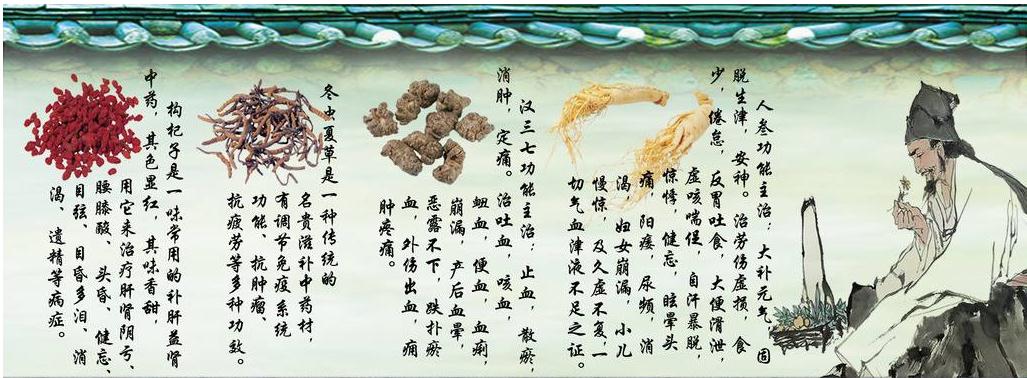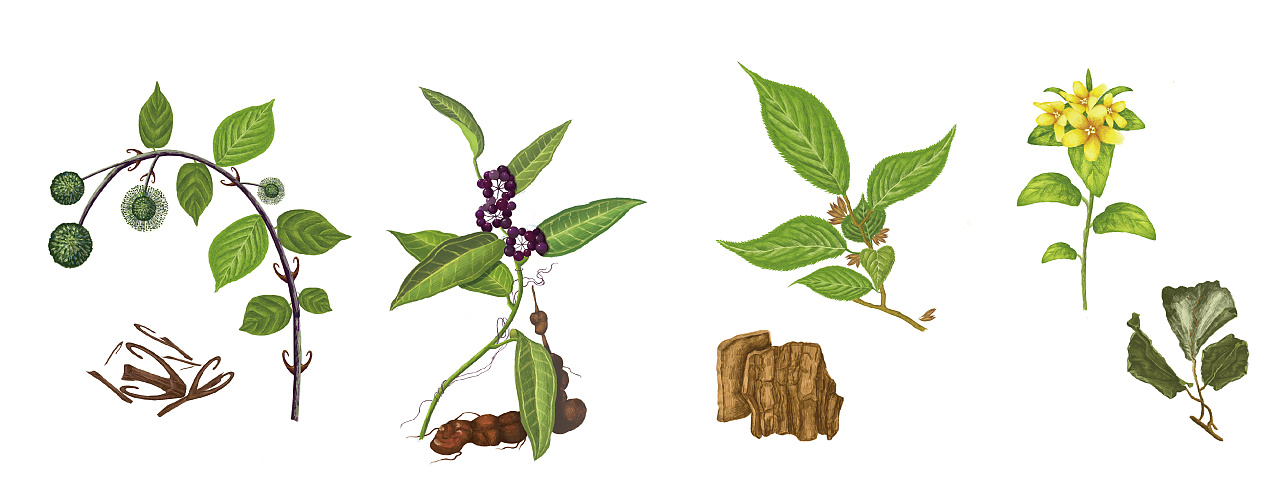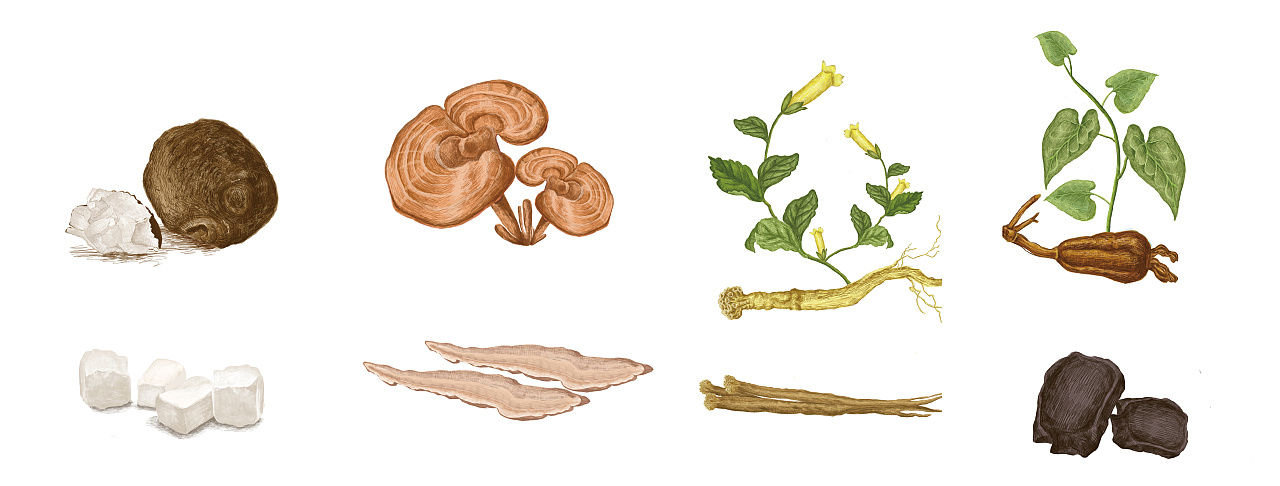Symptoms of Sangria are a general term for hypertrophic sclerotia, reduced sclerotia, and sclerotia. The hypertrophic sclerotia flower is thick and swollen, grayish, and the disease model is enlarged. There is a black sclerotia at the center, and the odor emerges after the diseased mold is broken. The reduced S. sclerotiorum is significantly reduced, grayish, hard texture, dark brown spots on the surface, and black hard sclerotia are formed within the disease. Small particles of sclerotinia disease Mulberry small fruit after the disease, swelling, endogenous sclerotia. Disease sickle grayish black, easy to fall off and left the fruit shaft. Sichuan, Jiangsu, Liaoning, Zhejiang, and Taiwan all happened. The mulberry strain Mitrula shiraiana (P. Henn.) Ito etlmai said that white stem well-being fungus is an Ascomycete subphylum fungus. Conidiophores filamentous, branched, terminally ovate to elliptic conidia, unit cells, colorless. Produces fruiting bodies from sclerotia, solitary or clustered. The fruiting bodies are long-handled, with flat handles, some slightly twisted, grayish-brown, and hairy. The fruiting body has a long elliptical head with several longitudinal arrangement of rice grain, light brown, and the ascospores are born in the sub-solid layer of the head, with 8 endogenous ascospores. Ascospores are colorless and oval. The mulberry sclerotinia citropathogenis Ciboria carunculoides Siegler et Jankins is called Cupola sclerotiorum; it belongs to the subphylum Aspergillus capsularis. Conidia subglobose. Ascus disk cup, county handle. Ascospora cylindrical, endogenous 8 ascospores, ascospores kidney-shaped, with hemispherical bodies attached. Branches are branched, separated or unseptated. Zhejiang and Guizhou have found. Prevention and control methods (1) Clearance of sick mulberry gardens. In the spring of the following year, when the sclerotia germinated to produce the ascidian disk, cultivating in time and burying it deeply to reduce the initial infestation source. (2) Chemical control Spraying 50% procymidone (sulferyl) wettable powder 1500-2000 times liquid or 50% nongrill wettable powder 1000-1500 times, 50% acetaminophen wettable powder 1000- 1500 times liquid, 70% thiophanate-methyl (thiophanate-methyl) WP 1000 times, 50% carbendazim WP 800-1000 times, spraying the tree crown has a good control effect.
Chinese Herbal Medicine (English name: Chinese herbal medicine): Chinese medicine is mainly composed of botanical medicine (root, stem, leaf, fruit), animal medicine (viscera, skin, bone, organs, etc.) and mineral medicine. Because botanical medicine accounts for the majority of Chinese medicine, Chinese medicine is also called Chinese herbal medicine.
There are about 5,000 kinds of Chinese medicines used in various parts of China, and there are countless prescriptions made by combining various medicinal materials. After thousands of years of research, an independent science, Materia Medica, has been formed. Various medical schools in China have set up the course of natural medicine, which is called the Chinese herbal medicine.
The concept of plant extracts can be accepted and recognized by various countries, and it is also a common expression used to spread herbal medicines in various countries. The export value of plant extracts in China exceeded the export value of Chinese patent medicines as early as 1999. In European and American countries, plant extracts and their products (plant medicines or food supplements) have a broad market prospect, and have developed into an emerging industry with annual sales of nearly 8 billion US dollars.
The plant extracts in China are generally intermediate products, which are widely used, mainly used as raw materials or auxiliary materials for medicines, health foods, tobacco, cosmetics, etc. There are also many kinds of raw material plants used for extraction, and there are more than 300 plant varieties that are extracted industrially.
Chinese Herbal Medicine China Herb,Best Chinese Herbs,Chinese Healing Herbs,Chinese Herbal Medicine Guangzhou Zhongzhinan Supply Chain Co.,Ltd. , https://www.gzzhongzhinan.com
Pathogenic mulberry hypertrophic sclerotial pathogen Ciboria shiraiana P. Henn. The white cup bacterium S. sangii is known as Ascomycota spp. The conidiophores are clustered, the bases are thick and small, with conidiophores. Conidiophores, ovoid, colorless. The sclerotia produced 1-5 apomictic discs. The daughter sac was contained in the disc, the lateral filaments were slender, there were 8 ascospores, oval ascospores, and achromatic cells, with 1-2 membranes.
Transmission routes and pathogenic conditions The bacterium sclerotia winters in the soil. In the following year (when mulberry blossoms are open), the conditions are suitable. The sclerotia germinates to produce the ascidian plate. The ascitic sporangium is released from the fruit sac on the fruiting body inside the plate and is transmitted to the female flower by airflow. The hyphae invade the ovary to form conidiophores and conidia. Finally, the mycelium forms a sclerotia, and the sclerotia falls into the soil as the mulberry plants pass through the winter. Warm, rainy and moist soil in spring will facilitate the germination of sclerotia, resulting in more apomictic discs and more serious diseases. Poor air and light transmission, low phlegm and dampness, many flowers and fruit, the old age of Mulberry Park is heavy. 



